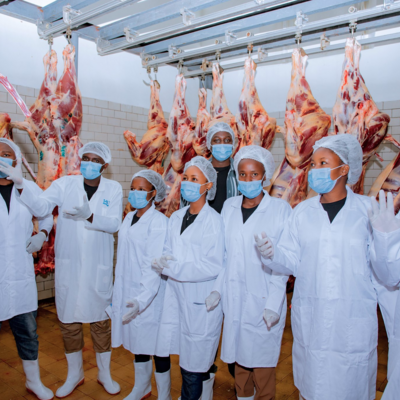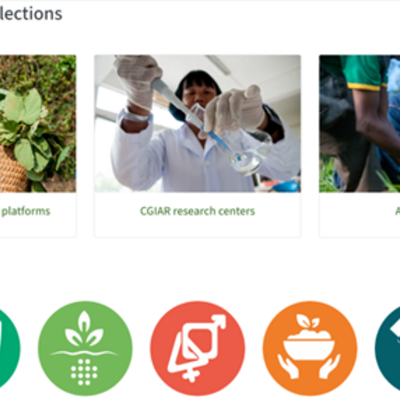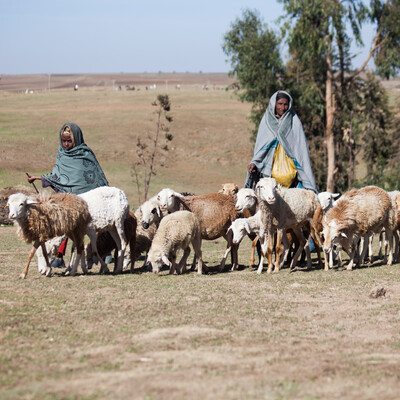
A one-stop shop doesn’t always work: Using different communication and sharing platforms at ILRI
Colleagues at ILRI often wonder:
Why do we have a wiki and a Yammer group for our project?
What is the point of both Slideshare and CGSpace?
Do we really need Yammer? What for?
Why not use one tool or platform?
Do I need to have all those different logins!
These are legitimate concerns that this post helps to explain.

What platforms? To do what?
For ILRI projects and programs, we tend to use a set of standard channels or platforms.
When a new project or program starts, they usually select a mix drawn from:
- A website, usually on a WordPress (blog) platform that provides key static information, links, news updates and opinion pieces, and comments.
- An informal wiki workspace, based on Wikispaces, which helps teams plan, document and track their work without fear of having to get everything polished and formal.
- A CGSpace collection, for all finished products and outputs. This ‘publishes’ and archives the entire formal content produced by a project team, from books to articles, briefs, videos and presentations etc. It serves open access as well as publishing objectives.
- A Yammer social network conversation space to share ideas, questions and information with project colleagues and wider CGIAR.
- A Slideshare space to share presentations and posters, though sometimes we simply embed them in the ILRI Slideshare account and use tags to connect to a specific project or process;
- A Flickr space for images and pictures – sometimes just as new ‘albums’ on the ILRI account, so we can use and re-use few but high quality pictures in blogs and other publications;
- A YouTube space or playlist to publish the formal and informal videos we produce.
- All using RSS feeds that allow interested people to sign up and follow project news and get email alerts.
At the corporate level, we use a similar set of standard platforms:
- The ILRI website, as well as the blogs ILRI Clippings (with general livestock information and news) and ILRI news (news from ILRI research);
- An ILRI Twitter account re-publishes news from our blogs and CGSpace collection for the wider public
- An ILRI LinkedIn group has wide conversations around livestock (research) issues in general and ILRI work in particular;
- An ILRI LinkedIn page is ILRI’s institutional face and automatically re-publishes news from our blogs;
- An ILRI Facebook fan page re-publishes all news automatically and an ILRI Facebook account is used mostly for personal contact between ILRI and former staff, and does not have a professional ‘slant’ to it.
- We use standard taxonomies, tags, categories, open applications and other devices to curate and ensure the content is re-usable and can be aggregated, re-purposed and re-published in many ways.
Why all these platforms?
There are various reasons for having all these platforms:
- Each platform has its specific niche, purpose and audience. We have found it better to combine these than try to create a single platform (that compromises on many individual functionalities).
- Rather than creating a single ILRI ‘portal’, by publishing our content on widely-used third-party platforms we have a greater chance of reaching people on those platforms.
- These platforms tend to reinforce open access, while in-house systems tend to be much more closed; and in some cases pose major challenges to collaboration with external partners.
- Putting all our content in one platform means that if that (commercial) platform changes its model or goes bankrupt, all our content is jeopardized. Using various platforms means all our eggs are not in one basket and minimizes risk.
- Using different platforms enhances the visibility of our research content because the platforms complement each other and have a higher chance of boosting search engine ranking.
- The variety of platforms means that staff and projects can tailor their use of different platforms and content. A ‘one-stop’ (or a ‘one-shop’) shop reduces choice.
Back to our original questions
If you are still wondering about where we started…
Why do we have a wiki and Yammer group for our project?
The wiki is for people to collaborate (share, plan and document) together, while Yammer is a sort of professional Facebook to share ideas, questions, updates etc. in an informal but (if needed) private space.
What is the point of Slideshare and CGSpace?
Slideshare features all our presentations (and posters) so we can re-use them (as visual snippets) into blog articles, web pages, wiki pages etc. Slideshare content is highly indexed and visible and attracts readers.
CGSpace collects presentations and posters (and all other outputs) for referencing, reporting and posterity. It is the permanent record of all outputs.
Do we really need Yammer? What for?
We do not need Yammer. But having a social network where we can safely chat about anything is rather helpful – and even critical for an organization that wants to be agile, learning, adaptive and quick in mobilizing its collective resources.
Why not use one system?
For the reasons above. The ILRI website is a single entry point to all ILRI’s public content. A new internal system, probably Office 365 and sharepoint, will likely provide an internal single access point. ILRI’s ICT team is working on a system to align credentials (and ensure maximum use of the CGIAR-wide active directory) used across the platforms.
Why create another account in a new/different platform? I’m struggling to remember my email password as is!
For the particular issue of remembering passwords across platforms, many of these platforms use consistent CGIAR credentials. Where this is not possible, there are simple password managers such as LastPass that alleviate the hassle of generating and remembering passwords.
See who to talk to for more on the different ILRI platforms/tools in the ILRI comms wiki FAQ page.



















